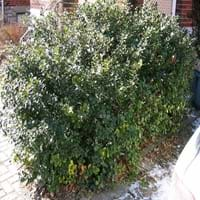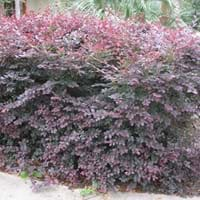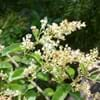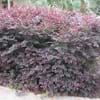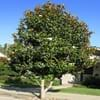Life Span
Perennial
Perennial
Type
Broadleaf Evergreen
Broadleaf Evergreen
Origin
Hybrid origin
China, Japan
Types
Ilex abscondita, Ilex aculeolata, Ilex affinis
Little Rose Dawn, Hines Purpleleaf, ‘Shang-hi
Number of Varieties
Not Available
Habitat
Subtropical climates, Woodland Garden Secondary, Woodlands
gardens, Hillside, open Woodlands, Roadsides, Rocky areas, Stream side, Woodlands
USDA Hardiness Zone
5-9
6-9
AHS Heat Zone
Not Available
Not Available
Habit
Oval or Rounded
Oval or Rounded
Minimum Height
Not Available
Flower Color Modifier
Bicolor
Bicolor
Leaf Color in Spring
Dark Green
Green, Bronze
Leaf Color in Summer
Dark Green
Green
Leaf Color in Fall
Dark Green
Green
Leaf Color in Winter
Dark Green
Green
Plant Season
Spring, Summer, Fall, Winter
Spring, Summer, Fall, Winter
Sunlight
Full Sun, Partial Sun, Partial shade
Full Sun, Partial Sun, Partial shade
The pH of Soil
Acidic, Neutral
Acidic, Neutral
Soil Drainage
Well drained
Average
Bloom Time
Late Spring
Early Spring, Late Winter
Where to Plant?
Container, Ground, Pot
Container, Ground
How to Plant?
Seedlings, Semi-ripe cuttings
Seedlings, Transplanting
Plant Maintenance
Medium
Low
Watering Requirements
Requires regular watering
Do Not over Water
In Summer
Lots of watering
Lots of watering
In Spring
Moderate
Consistently
In Winter
Average Water
Ample Water
Soil pH
Acidic, Neutral
Acidic, Neutral
Soil Drainage Capacity
Well drained
Average
Sun Exposure
Full Sun, Partial Sun, Partial shade
Full Sun, Partial Sun, Partial shade
Pruning
No pruning needed, Prune in early spring, Prune in winter, Remove damaged leaves, Remove dead branches, Remove dead leaves, Requires little pruning
Prune to control growth
Fertilizers
All-Purpose Liquid Fertilizer
All-Purpose Liquid Fertilizer, Fertilize three times a year
Pests and Diseases
Red blotch
Bacterial Gall
Plant Tolerance
Salt
Drought
Flowers
Insignificant
Showy
Flower Petal Number
Single
Single
Foliage Texture
Medium
Medium
Foliage Sheen
Glossy
Matte
Attracts
Birds
Not Available
Allergy
Diarrhea, Mildly Toxic, Vomiting
Not Available
Aesthetic Uses
Cottage Garden, Showy Purposes, Used for making hedges
Showy Purposes
Beauty Benefits
Not Available
Not Available
Environmental Uses
Air purification, Food for animals, Food for birds, Wildlife
Not Available
Medicinal Uses
Not Available
No Medicinal Use
Part of Plant Used
Fruits
Whole plant
Other Uses
Food for animals, Used for Landscaping
Used as Ornamental plant
Used As Indoor Plant
No
No
Used As Outdoor Plant
Yes
Yes
Garden Design
Feature Plant, Foundation, Hedges, Mixed Border, Screening, Wind Break
Container, Feature Plant, Foundation, Hedges, Mixed Border, Screening, Wind Break
Botanical Name
ILEX x meserveae 'Blue Princess'
LOROPETALUM chinense
Common Name
Blue Princess Holly
Loropetalum, Chinese fringe flower
In Hindi
BluePrincess Holly Plant
Loropetalum
In German
BluePrincess Holly Pflanze
Loropetalum
In French
BluePrincess houx Plante
Loropetalum
In Spanish
Planta del acebo BluePrincess
Loropetalum
In Greek
BluePrincess Holly Φυτών
Loropetalum
In Portuguese
BluePrincess Planta Holly
Loropetalum
In Polish
BluePrincess Holly roślin
Loropetalum
In Latin
Planta BluePrincess Holly
Loropetalum
Phylum
Not Available
Spermatophyta
Class
Not Available
Dicotyledonae
Order
Aquifoliales
Saxifragales
Family
Aquifoliaceae
Hamamelidaceae
Clade
Angiosperms, Eudicots
Angiosperms, Core eudicots, Eudicots
Tribe
Not Available
Not Available
Subfamily
Not Available
Not Available
Number of Species
Not Available
Properties of Blue Princess Holly and Loropetalum Chinese
Wondering what are the properties of Blue Princess Holly and Loropetalum Chinese? We provide you with everything About Blue Princess Holly and Loropetalum Chinese. Blue Princess Holly has thorns and Loropetalum Chinese doesn't have thorns. Also Blue Princess Holly does not have fragrant flowers. Blue Princess Holly has allergic reactions like Diarrhea, Mildly Toxic and Vomiting and Loropetalum Chinese has allergic reactions like Diarrhea, Mildly Toxic and Vomiting. Compare all the properties and characteristics of these two plants. Find out which of these plant can be used as indoor plant. If you are interested to decorate your house and garden, find out aesthetic uses, compare them and select the plant which will beautify your surrounding. Along with beautification, try comparing medicinal and edible uses of Blue Princess Holly and Loropetalum Chinese and you can choose the plant having best and most benefits.
Season and Care of Blue Princess Holly and Loropetalum Chinese
Season and care of Blue Princess Holly and Loropetalum Chinese is important to know. While considering everything about Blue Princess Holly and Loropetalum Chinese Care, growing season is an essential factor. Blue Princess Holly season is Spring, Summer, Fall and Winter and Loropetalum Chinese season is Spring, Summer, Fall and Winter. The type of soil for Blue Princess Holly is Loam and for Loropetalum Chinese is Loam while the PH of soil for Blue Princess Holly is Acidic, Neutral and for Loropetalum Chinese is Acidic, Neutral.
Blue Princess Holly and Loropetalum Chinese Physical Information
Blue Princess Holly and Loropetalum Chinese physical information is very important for comparison. Blue Princess Holly height is Not Available and width 180.00 cm whereas Loropetalum Chinese height is 180.00 cm and width 180.00 cm. The color specification of Blue Princess Holly and Loropetalum Chinese are as follows:
Blue Princess Holly flower color: White
Blue Princess Holly leaf color: Dark Green
Loropetalum Chinese flower color: White
- Loropetalum Chinese leaf color: Green and Bronze
Care of Blue Princess Holly and Loropetalum Chinese
Care of Blue Princess Holly and Loropetalum Chinese include pruning, fertilizers, watering etc. Blue Princess Holly pruning is done No pruning needed, Prune in early spring, Prune in winter, Remove damaged leaves, Remove dead branches, Remove dead leaves and Requires little pruning and Loropetalum Chinese pruning is done Prune to control growth. In summer Blue Princess Holly needs Lots of watering and in winter, it needs Average Water. Whereas, in summer Loropetalum Chinese needs Lots of watering and in winter, it needs Ample Water.
